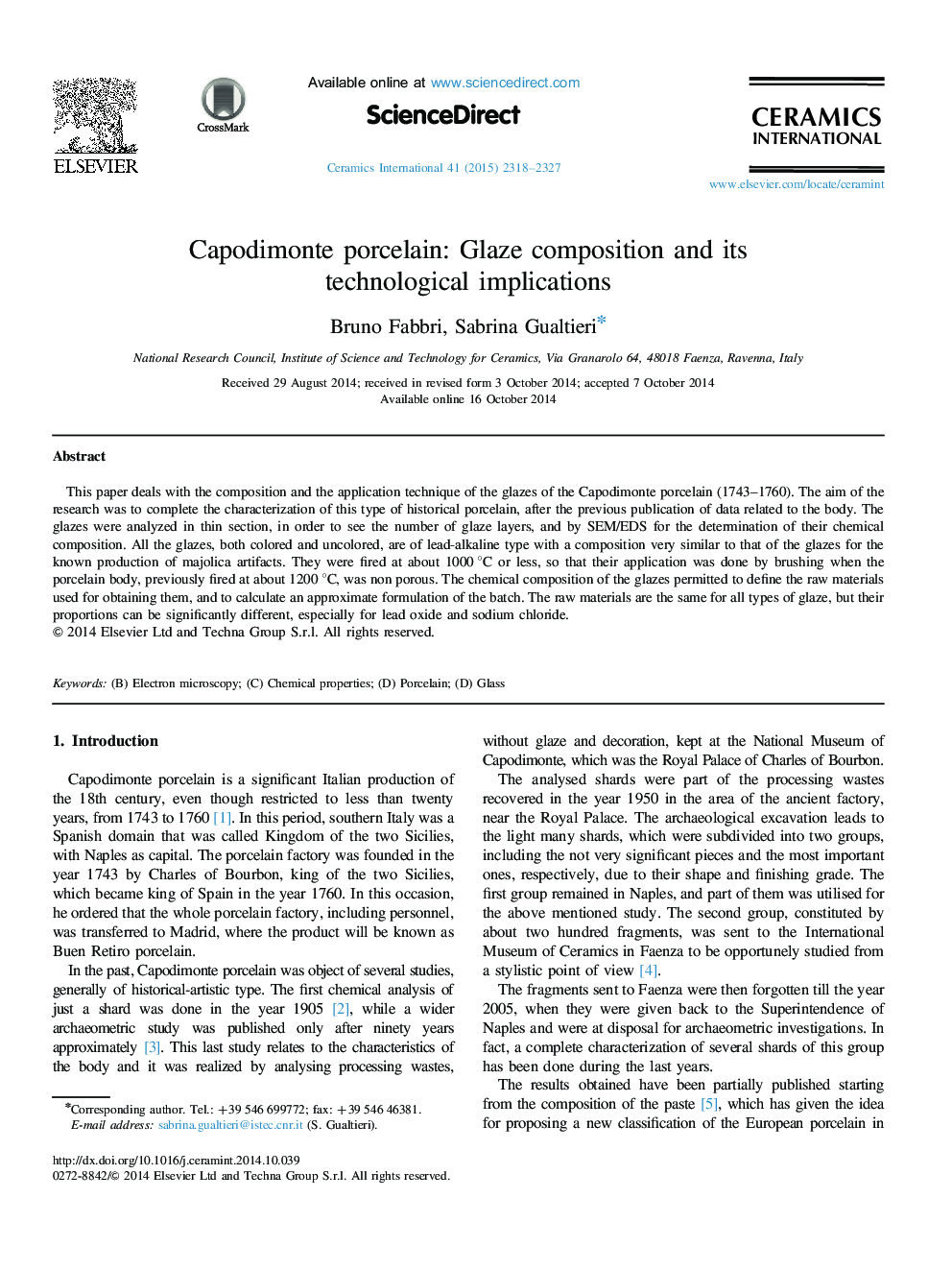| کد مقاله | کد نشریه | سال انتشار | مقاله انگلیسی | نسخه تمام متن |
|---|---|---|---|---|
| 1459251 | 989591 | 2015 | 10 صفحه PDF | دانلود رایگان |

This paper deals with the composition and the application technique of the glazes of the Capodimonte porcelain (1743–1760). The aim of the research was to complete the characterization of this type of historical porcelain, after the previous publication of data related to the body. The glazes were analyzed in thin section, in order to see the number of glaze layers, and by SEM/EDS for the determination of their chemical composition. All the glazes, both colored and uncolored, are of lead-alkaline type with a composition very similar to that of the glazes for the known production of majolica artifacts. They were fired at about 1000 °C or less, so that their application was done by brushing when the porcelain body, previously fired at about 1200 °C, was non porous. The chemical composition of the glazes permitted to define the raw materials used for obtaining them, and to calculate an approximate formulation of the batch. The raw materials are the same for all types of glaze, but their proportions can be significantly different, especially for lead oxide and sodium chloride.
Journal: Ceramics International - Volume 41, Issue 2, Part A, March 2015, Pages 2318–2327